As far as the physical structure of a network or its purposes and compositions in the form of telecommunication equipment is concerned, managing cables appropriately is one of the ways to ensure that the system is operational and all the parts are interconnected effectively. Among those is vertical cable management, which relates to how cables are routed in, upon, and across data centers and telecommunication rooms so that optimization of space and maintenance of the structures can be done quickly. The purpose of this article is to review vertical cable management, mainly from the perspective of the tools and methods used by the reviewers to enhance the horizontal or vertical connection of the system. The proper identification and understanding of the concepts and procedures associated with vertical cable management will assist the company in attaining an unimpaired flow of work and increase the durability of the network components. Whether you are a part of the IT staff or a facilities manager, gaining knowledge on such a technical subject will allow you to deploy systems that meet today’s dynamic technological environment.
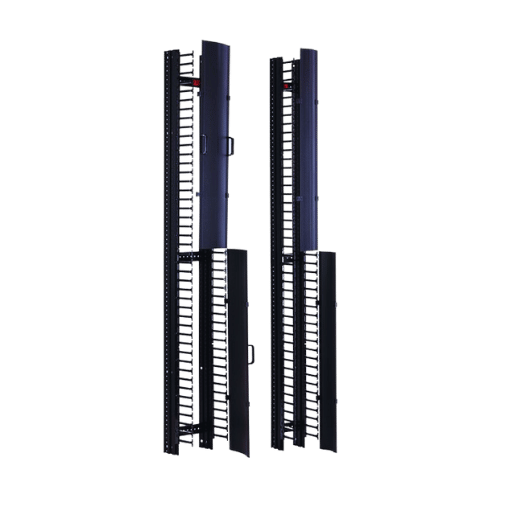
The other layer of a structure is the vertical cable, which is related to the vertical transmission of data and electrical signals from one floor to the other and within a building in vertical equipment racks. Its relevance stems from its ability to preserve order and efficiency even in high-density networks. Using vertical cable management devices leads to activity that is more productive in the work environment, in addition to requiring less time, which enhances easy airflow and makes it less labor intensive due to less cumbersome equipment and fewer chances of damaging the equipment or the cables. This further augments the system’s performance and operable reliability, pointing out the vertical cables as one of the important elements in any telecommunications structure.
Vertical cabling is an efficient means of transmitting data, voice, or video signals on a particular structure since it is installed in building legs. This is particularly important in multi-story structures such as data centers where there may be a need to interconnect various floors. The approach implies the use of cables without affecting airflow and accessibility, which may cause heat and maintenance issues. Such separation, as placed on installed cables in prescriptive vertical ducts, eases the exercise, provides for haircuts in time to come, and reduces possible interruptions. In the same way, vertical cable management maintains the physical structure of the cables, eliminating interference and, in turn, increasing the efficiency of the network system. Successful practice includes vertical cable management and organizational accessories that withstand constant operation and prolong the operational period of the resultant network elements, enabling proper site management.
Vertical cable is an essential element for the design of the overall cable management system of telecommunications infrastructure. As the leading sources elucidate, the manifest objective of vertical cable deployment is to make it more structured and orderly by offering easy operation and maintenance while protecting the cable. Clearance eliminates embarrassing straining of equipment power demands by allowing sufficient airflow and reducing thermally induced cable overheating and equipment failures. In addition to this, there are vertical cable organizers and managers that keep the cables in a herbal manner, looking more professional and more flexible as new developments are incorporated into the system. This is because the system is strategically wrapped with well-organized cables, which enhances the reliability and continuity of the system in high-speed network connection, which is of utmost importance.
Vertical cable management has become necessary because it can help keep the network rack free from many wires. Cable management is crucial as it ensures that all cables are routed vertically when not in use; therefore, maintenance or modification can easily be performed as necessary. Such a system prevents jumbling and enables simple repair and enhancement. Besides that, vertical cable management promotes optimal cooling efficiency by reducing obstruction of airflow within the rack elements and eliminating incidences of overheating. Moreover, using quality vertical cable products improves the strength of the installation’s complete structure, increasing network performance for a long time. In the general context, vertical cable systems are a matter of strategic choice since they increase the network design’s dependability, capacity, and lifespan.
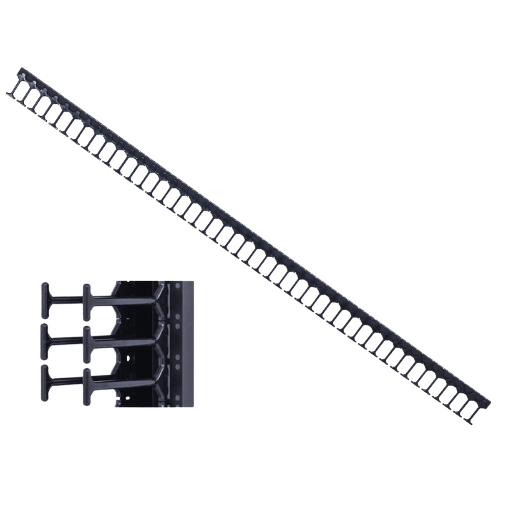
Following these techniques, you would optimize the use of vertical cable managers, ensuring neatness and efficiency in a network setup while allowing for easy changes.
When constructing a successful cable management strategy, one must approach this with consideration for all the stages involved: design, ordering, and future expansion potential. Please begin with checking both present and anticipated requirements for the cluster network in order to establish how many and what sort of cable pathways, such as vertical cable managers, are needed by the project’s technical requirements. Ensure that such components are also in line with the structure of the building and any installed devices. Create an interactive installation design that simplifies access while reducing the likelihood of installation disruptions that cause inefficient airflow and cooling. Standard cable labeling and color coding should be employed across all cables to provide a more user-friendly troubleshooting system. Another key aspect is allowing system expansion by incorporating some room for unexpected future changes.
Some measures may be taken to facilitate vertical cable management. It is recommended that the wires’ routes be planned carefully to minimize traffic and improve accessibility. Support services that follow proper cable bend radius to support its nonapparent damage and the signal itself. Evaluate and refine the framework periodically by developing or installing networks. Ensure all the cables are correctly bundled or looped in a manner that arranges the mess and is loosely bound to allow changes in the future. Lastly, analysis and labelling will assist in ensuring that the situation of unharnessed cables will not worsen throughout the system’s operation.
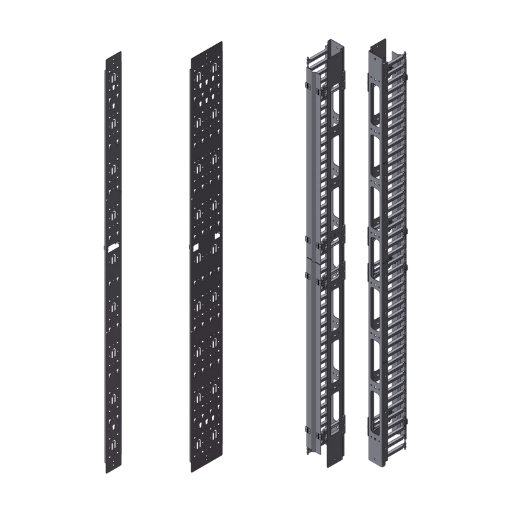
Among the many firms offering vertical cable products, three stand out as the most influential and highly rated by customers.
When looking for the best vertical cable manufacturer, various parameters must be evaluated so that quality and plumbing can be achieved. First, analyze the company’s reputation; here, looking for customer reviews and testimonials may help the reliability of the products and the customer support they offer. Search for manufacturers that provide quality vertical cables and that are shown in the correct quality standards and certifications since this guarantees the performance and safety of the products. For practical project completion, it is important to consider the availability of other related products and the levels of customization. The manufacturer should also provide good and affordable price terms and provisions on warranties to make it possible for the clients to reduce purchase costs. Finally, consider the extent of technical support and the after-sale service, as the manufacturer’s support is effective in the resolution of any social concerns regarding the installation and maintenance of the product.
Suppose you want to get the vertical cabling products and accessories right. In that case, there is more to it than placing an order since some aspects should be considered to achieve optimal performance and compatibility within the current network structure. The first consideration concerns the cable specifications, such as bandwidth or data rates, and ensuring the system’s needs are met. Ensure that the products meet the standards set by some organizations like TIA/EIA and IEEE, which ensure compatibility and safety. The insulation and jackets should be evaluated since they affect the longevity and weather-resistant properties of the vertical cable. Take note of other related fittings, such as connectors and patch panels, that add to the completeness of the installation and reliability of the system. Last but not least, consider operations, particular deployment, and ease of modification aptness, meaning that the product has to be well adopted and incorporated into the already existing systems or modifications effects for expansion applications on the systems of very harsh security levels. In doing so and when evaluating the best-performing companies and retailers, you can make a choice that addresses your technical and monetary concerns.
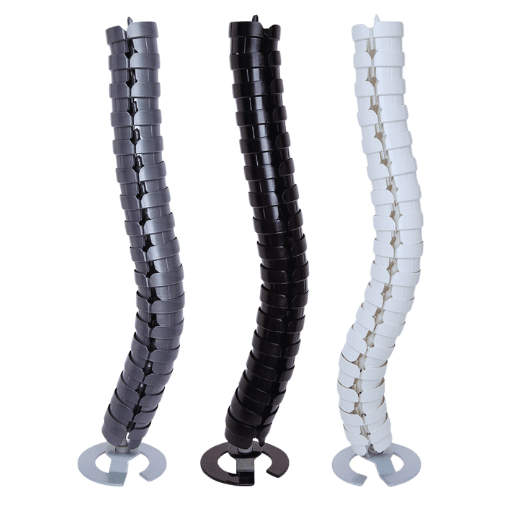
Vertical cabling solutions have several benefits that improve network management, especially over their horizontal counterparts. To begin with, space usage maximizes, especially where horizontal space expansion is not possible. This space-saving feature encourages a more compact network topology, thus limiting the congestion of wires and other potential failures connecting different systems. Vertical cables have high data rates and increased bandwidth, which cater to the increasing demand for data. This means that communications are not stalled by the network, irrespective of the nature of the user’s requirements. Average vertical cables are constructed to last for many years due to their insulation, which endures any environmental condition and subsequently lowers the cost of use due to low maintenance levels. Additionally, they are constructed in such a way as to be able to use other types of connectors and accessories, which makes them easy to combine with other systems. These are crucial for the maintenance of a robust and future-oriented network framework that will cope with radical shifts in systems architecture.
The vertical cable is space-effective and efficient because it allows a vertical approach to the cable routing problem, which reduces the horizontal spread in space-confined areas. This practice tends to save on precious floor space and rack space to fit in more equipment in the same footprint. Vertical cable management also arranges resting cables properly, which reduces debacles while increasing ventilation, which helps to prevent the equipment from heating and satisfying power requirements efficiently. That too neat fitting assists in fast repair works and upgradation with reduced idle time. In the end, such accommodation practices improve an efficient and eco-friendly network.
Most of the customer satisfaction with vertical cable solutions results from how strong, effective, and flexible these solutions are. Customers look forward to high-speed and high-bandwidth data transmission to fulfill the needs of contemporary communication. Vertical cables’ strength and reduced upkeep are also accompanied by cost efficiencies and dependable service, which are highly appealing to customers. It is more apparent how saving up space and offering other efficient solutions for the arrangement of cables leave an orderly and expandable network system designed for future growth and expansion. Therefore, all these aspects, in one way or another, improve the confidence and satisfaction of the customers with the vertical cable installation.

Chiptech Inc. is focused on providing advanced vertical cable applications, which they design especially for modern-day telecommunications demanding systems, bridging practicality with creativity. Within the organization, Chiptech Inc.‘s main aim has been product development whilst ensuring that all network solutions are cost-effective, systems-friendly, and able to grow within a client’s requirements. Towards the end, they envisage the main focus in building helpful relationships through excellent products building up towards a prominent and long-lasting structure with efficient connection. With the help of their products, they meet customers’ needs and facilitate the achievement of the most advanced technologies, leading the industry and equipping customers with advanced voice communication capabilities.
Chiptech Inc. is resolute in its quality and service and ensures that no vertical cable solution is designed below the accepted industry standards. Testing and new developments have enabled Chiptech Inc. to produce more reliable and better-performing products, which are crucial in today’s competitive environment. Well-versed in the requirements of their clients, the customer support team assiduously resolves customer requests and ensures that trust and cooperation are delivered to each customer. Such commitment to quality and care for the customer strengthens the position of Chiptech Inc. as a player in vertical cable solutions.
Chiptech Inc. cuts across by providing vertical cable solutions that are creative and flexible to optimize network infrastructures, thus allowing users to manage their setups better. Chiptech Inc. focuses on advanced design principles and ecologically friendly materials to create efficient new products with fewer systems. This entails spending time and resources in science and funding projects to be in tune with market dynamics and offer up-to-date technologies that correspond with the needs of intricate wire management systems, and all the angles are being met. Chiptech Inc. also offers client-oriented courses to demonstrate the persistent user of a particular technology and successfully adapt to its use. This integrative perspective inspires the industry’s growth and nurtures the development of cable management technologies in the world and in diverse needs.
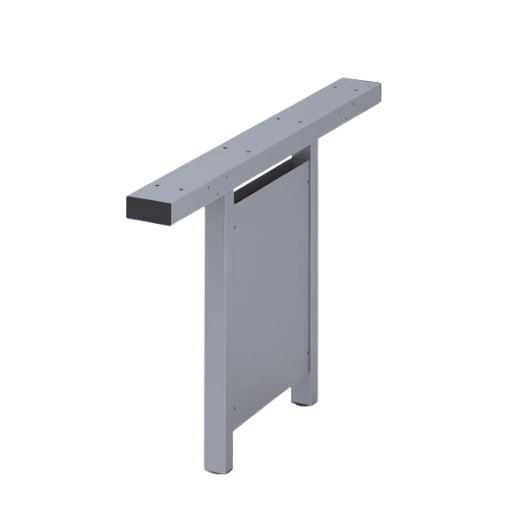
A: Vertical Cable is the best low-voltage wiring and cabling solution provider in the market. It offers numerous products, including network cables, coaxial cables, and accessories, and caters to a variety of industries.
A: Vertical Cable is in the US and has been operational in the market since 2006. It is well established in the US and European markets and seeks to be relevant to its customers by offering quality products and services.
A: Vertical Cable offers many cables, including data network cables, coaxial cables, and cables for low-voltage cables. The network cable, coaxial cable, and even low voltage cable are available in different lengths and shades depending on the application requirements.
A: Vertical Cable has implemented adequate quality measures and applies technology to all its products to conform to industry standards. It also has great feedback on ensuring reliable and lasting cable provision.
A: Yes, Vertical Cable offers a wide range of cable organization products, such as cable ties, mounting brackets, rails, etc. These products assist in the orderly arrangement and protective storage of cables, simplifying their future use and maintenance.
A: To learn more about Vertical Cable’s goods, visit their official website or contact their customer service team. They can provide detailed product information and help you pinpoint the ideal offerings for your needs.
A: Vertical Cable is a stand-alone company that partners with several cable and technology companies. Its mission statement includes providing high-quality products and good service.
A: Yes, Vertical Cable manufactures a variety of products for use in households and commercial places. Whether you need cables for a single home or a large office structure, they have the appropriate solutions to suit all your requirements.
A: Vertical Cable’s products are distinguished mainly by their purpose, length, and shape, undeniably attracting users worldwide. High-end materials and manufacturing processes help Vertical Cable achieve its market aim.
A: If you want to partner with Vertical Cable, contact their business development department. They can provide more details about the partnership goals and the collaboration.